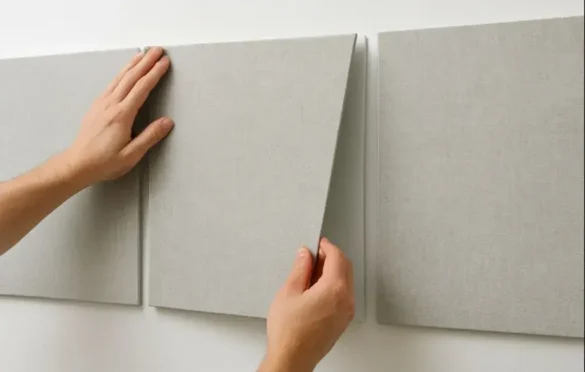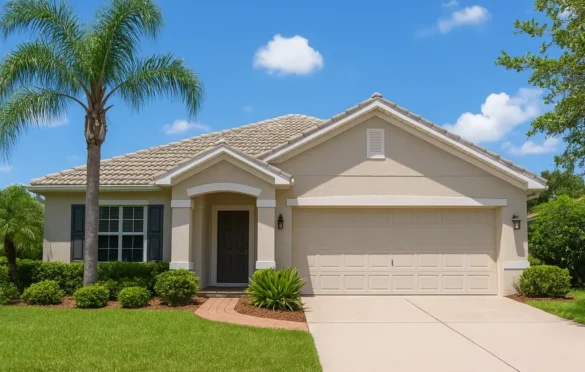Explore this post with:
London – Cracks in walls are a common occurrence in many types of homes, including new builds. While some cracks are a normal part of a building’s settling process, others can indicate more serious issues. Understanding the causes of these cracks and when to seek professional help is crucial for maintaining the structural integrity of your home.
How serious are the Cracks in my Wall?
Cracks in the walls can tell you a lot about how bad the issue is. Take pictures and measures of them often to keep an eye on severity. Some cracks could mean that you and your family are in grave danger. You need to fix the wall right away if you see cracks, popping nails or screws, or walls that lean, twist, or bow.
These signs could mean the wall is about to fall down. Building inspectors who are qualified can help you figure out how bad the cracks are and give you a price quote for fixing them.
When You Should Be Concerned of Wall Cracks
When should you start to worry about wall cracks? The placement, direction, and size of the cracks may provide valuable information regarding their severity. There are additional indicators that might indicate a larger issue.
If your doors and windows start sticking or won’t open or shut correctly, and it isn’t due to paint or other small concerns, you may have a structural problem. Nail popping or exposed nails and screws in the walls are further warning signs. Cracks in the ceiling, where it joins the walls, and in the slab are also reasons for worry.
An uneven floor is another warning indication. If you roll a ball across the floor and it doesn’t go straight, your floor may be tilting.
Twisting, tilting, or bending walls are major concerns that may signify an impending collapse. Treat these symptoms immediately since they may endanger your family’s safety.
Common Causes of Wall Cracks
- Natural Settling: New-build homes often develop cracks as they settle into their foundations. This is a normal process where the ground underneath compacts under the weight of the structure.
- Wear and Tear: Over time, the foundations of any home can shift and settle, leading to gradual movement and minor cracks in walls.
- Drying Plaster: Newly plastered walls can develop cracks as the plaster dries and shrinks.
- Leaks: Escaped water from leaks can weaken walls and cause cracking.
- Vibrations: Heavy traffic or construction work nearby can cause vibrations that lead to cracks in walls.
- Structural Issues: More serious structural problems, such as subsidence, can cause significant cracks.
Types of Cracks and Their Implications
- Small or Hairline Cracks: Generally not a cause for concern and can be filled and painted over.
- Wide Cracks (Over 5mm): These should be inspected by a professional as they may indicate more serious structural issues.
- Diagonal Cracks: Often a sign of structural movement or damage, requiring a structural engineer’s assessment.
- Cracks Above Door Frames: Can indicate foundation issues and should be checked.
- Cracks Allowing Daylight Through: Suggests significant structural movement and potential subsidence.
Causes of Wider Cracks
- Cracks Under 5mm: Usually just in the plaster and not serious.
- Cracks Between 5mm and 15mm: More likely to be serious and may need professional repair.
- Cracks Over 25mm: Definitely require professional examination.
If a crack is wider at the top than the bottom and visible both inside and outside the home, subsidence could be the culprit.
Diagonal Cracks and Their Significance
Vertical cracks often result from plaster expansion and contraction due to humidity changes and are generally harmless. However, diagonal cracks, especially those resembling a staircase pattern, could indicate structural issues and should be investigated.
Cracks Around Door Frames
Cracks around door frames can be a sign of foundation damage. Any crack that lets in daylight indicates serious problems and should be addressed immediately.
Cracks in New-Build Homes
New-build homes often experience cracks due to settlement, shrinkage, or thermal movement. The National House Building Council (NHBC) notes that minor cracking is common as homes settle on new foundations. Shrinkage occurs as materials like mortar, plaster, and concrete dry out, and thermal movement results from seasonal temperature changes.
How to Repair Wall Cracks
There are several techniques to repair wall cracks. Filler and paint may easily disguise minor hairline fractures. This method allows for the rapid healing of minor cosmetic flaws.
However, if your cracks are caused by a structural problem, repairs may be more expensive, time-consuming, and bothersome. The more you wait, the more it costs. For significant cracks, you should consult a professional to determine the underlying problem. The repair procedure may include:
- Reblocking or restumping: It is the process of replacing old, failing stumps (made of steel, concrete, or wood) with new ones after they have decayed, been attacked by termites, or rusted.
- Levelling and underpinning: This process includes digging and pouring or injecting fresh concrete to restore the foundation to its original level.
- Demolition and reconstruction: In severe circumstances, the best option may be to destroy and rebuild the damaged wall to solve major structural flaws.
Only an expert can advise you on the best solutions, and you may need to hire various tradesmen, such as builders, plumbers, or tree loppers, to complete the task.
Insurance Coverage for Cracks
- Cosmetic Cracks: Typically not covered by home insurance as they are considered wear and tear.
- Leaks: May be covered under the ‘escape of water’ clause of your policy.
- Subsidence: Usually covered by buildings insurance, which will include sending a specialist to assess and address the damage.
Understanding Subsidence
Subsidence occurs when the ground beneath a house sinks, causing the foundations to become unbalanced. This leads to cracks in walls and ceilings, sticking doors and windows, and sloping floors. Common causes include tree roots, clay soil, drought, mines, or leaking drains.
Insurance and Subsidence
Buildings insurance generally covers subsidence damage. Insurers will send specialists to determine the cause and extent of the damage. Severe cases may require underpinning to strengthen the foundations.
Detecting Subsidence in Surveys
A HomeBuyer Report or Building Survey can indicate potential subsidence. If suspected, a structural engineer should be consulted. Previous subsidence repairs should come with documentation and guarantees.
For more information about ground engineering solutions and to address any structural concerns, contact GEOSEC Ground Engineering, a trusted provider with over 20 years of experience in tackling subsidence and other stability issues.
In case you missed!
About the Author: archistyladmin
At Architecturesstyle, we’re passionate about smart design, beautiful spaces, and practical tips that help you bring great architecture into everyday life. Whether it's modern home ideas, iconic buildings, or expert advice, our team brings fresh and useful content to readers who love architecture as much as we do.




